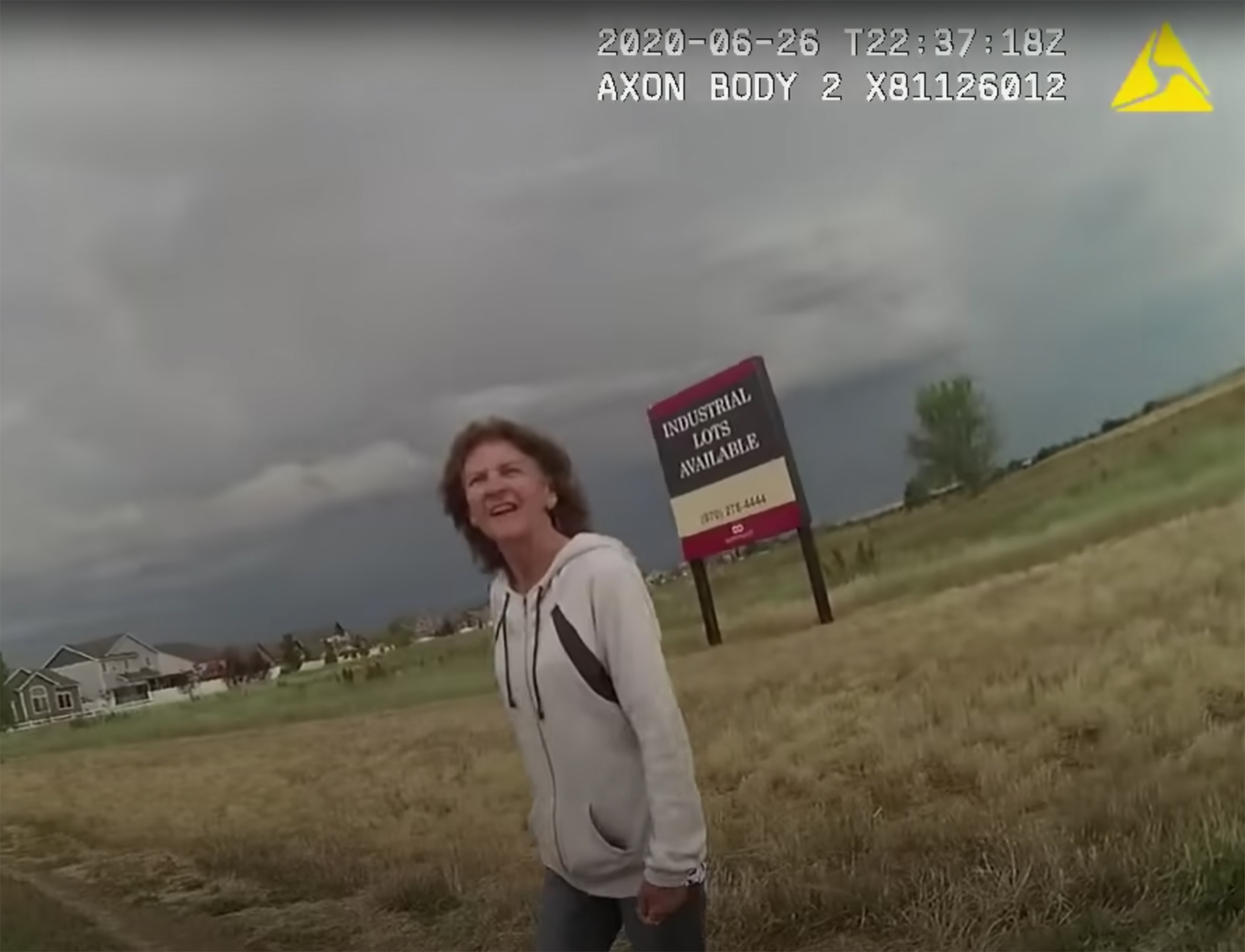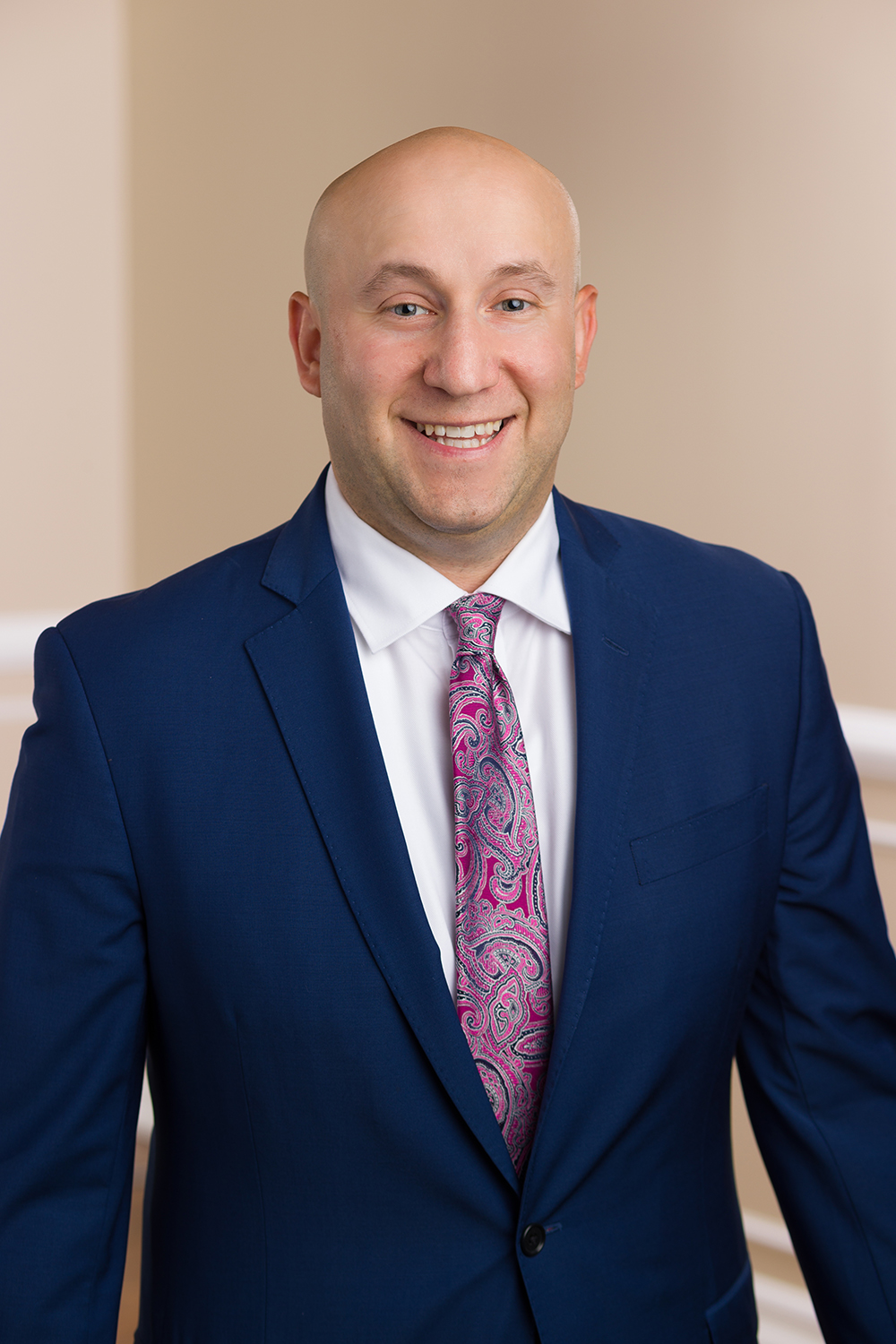Seeking Justice for Civilians Injured by Law Enforcement
Despite obstacles like qualified immunity, Sarah Schielke (’08) and Cory Rothbort (’13) have won major settlements for victims of police officers’ excessive force.

An image from Loveland, Colorado Police bodycam footage of Karen Garner’s arrest.
Seeking Justice for Civilians Injured by Law Enforcement
Despite obstacles like qualified immunity, Sarah Schielke (’08) and Cory Rothbort (’13) have won major settlements for victims of police officers’ excessive force.
In June 2020, as protests in response to the murder of George Floyd spread across the country, Karen Garner was picking wildflowers along a Colorado roadside when she was arrested.
Police had been called after Garner, a then-73-year-old woman with dementia, left a nearby Walmart without paying for items worth less than $14. They threw her to the ground, twisted her arm behind her back, handcuffed her and pinned her against a police vehicle, breaking her arm and dislocating her shoulder in the process.
One year later, attorney Sarah Schielke (’08) secured a $3 million settlement with the city of Loveland, Colorado, adding Garner to the growing list of people who have successfully held police accountable for the use of excessive force.

Each year, an estimated 250,000 civilians suffer injuries at the hands of law enforcement and 600 are killed, according to research from the University of Illinois Chicago’s Law Enforcement Epidemiology Project. But although settlements for excessive force and other misconduct have added up to billions of dollars of payouts from municipalities in recent years, qualified immunity and other obstacles still prevent many injured civilians from finding justice. Schielke is among the group of civil rights lawyers working to change that.
“I want the police to be more reticent to hurt people and to be less reckless about the damage they’re doing,” Schielke says, “because they’re afraid that people like me are out there.”
In November 2022, just one year removed from Garner’s settlement, Schielke reached a $7 million settlement for Michael Clark, a then-75-year-old man from Idaho Springs, Colorado, who was tased and forcefully arrested by police in his apartment, suffering a stroke after his head hit a chair.
The results in Garner and Clark’s cases came in the wake of Colorado’s passage of a law in 2020 that responded to Floyd’s death by allowing civil rights lawsuits to bypass qualified immunity, a controversial doctrine established by the US Supreme Court in 1982 that protects government officials from liability unless the specific contours of a harmful action have been clearly established to be illegal. It often serves to limit or bar compensation for injured civilians whose cases against police lack sufficient precedent—regardless of the extent of their injuries or the law enforcement misconduct.
“[Qualified immunity] crystallizes systemic police brutality into American life and it’s a barrier to real change that is not movable until Congress gets rid of it,” Schielke says.
For Cory Rothbort (’13), who began his career at an insurance defense firm and joined New Jersey plaintiffs firm Mazie Slater Katz & Freeman in 2019, a $10 million settlement secured last May for a man rendered quadriplegic following a 2014 incident of police brutality served as an introduction to excessive force cases. It was among the first matters he was assigned upon joining the firm, and the settlement came after a four-week trial resulted in a hung jury.

Rothbort’s client, Xavier Ingram, suffered a “near-internal decapitation,” in the words of a surgeon who testified at trial, when he was beaten and his neck stepped on by police in Camden, New Jersey, after he attempted to flee when an officer approached him as he was exiting a liquor store. He was 20 at the time. While qualified immunity played a limited part in Ingram’s case—everyone acknowledged that if police did what was alleged, it would not have been reasonable or consistent with police practices, Rothbort says—Ingram’s attorneys had to overcome the lack of body-worn cameras showing clearly what happened. A distant (and inconclusive) surveillance video was the only visual evidence available.
Ingram’s attorneys also faced attempts by the defense to portray him in a negative light, including blaming him for his own injuries and claiming he had a gun and drugs on him at the time of the incident, Rothbort says. To overcome this common defense tactic in excessive force cases, Ingram’s lawyers walked around Camden to find eyewitnesses who could describe the force police used on him.
“That was really one of the keys to the case—having boots on the ground from day one,” Rothbort says.
When a client finds Schielke after being injured by police, she begins by filing a flood of public records requests to “find everything the officer has ever done,” including their history of charging people with resisting arrest and obstruction, which she says are red flags common among the most forceful officers. She spends an enormous amount of time and more than $20,000 annually to compile these requests, despite operating as a solo practitioner with only one paralegal by her side.
In her complaints, which can reach 100 pages in length, she pleads in every fact she can find through her research and every possible inference from those facts, including body-worn camera videos, to overcome the inevitable motion to dismiss for lack of detail. She also publishes to YouTube videos of these troubling encounters, captured by police cameras, so she can shift public perception and apply pressure to police departments hoping to keep a case quiet. The 18 videos she’s posted have amassed more than 2 million combined views and contributed to the significant results she’s delivered for clients, she says.
“No matter what safeguards these bad police actors or agencies have become so comfortable relying on, nothing can stop public opinion and public outrage,” Schielke says.
Back in New Jersey, the defense sought to keep Ingram from testifying at his trial, but Rothbort and his colleagues were able to secure his ability to appear in-person, speaking from a hospital bed directly to jurors about his experience.
“There was no verdict that could have usurped the value and the benefit that Xavier testifying had to him,” Rothbort says, noting that not every victim of excessive force is able to tell their own truth.
Despite the national conversation on policing that rose up after Floyd’s death, Ingram’s attorneys opted not to attempt to bring up similar incidents across the country during the trial, Rothbort says.
“There are people in every profession who don’t act in accordance with the rules and regulations they’re supposed to follow. We tried to just make it about this case, not a referendum on police brutality in America, because I think that’s when the case gets away from you,” he says.
Rothbort believes a lone holdout on the jury stood in the way of a trial verdict for Ingram, which could have resulted in even more significant damages in his favor. The sides reached settlement shortly thereafter.
In excessive force cases, each significant result, such as the $10 million for Ingram, makes it more likely that the next victim will be able to secure justice, Schielke says. It also helps protect people like Garner, Clark and Ingram from being injured by police in the future.
“It always starts with people who are vulnerable being harmed,” Schielke says, “so [shedding] light on it is one of the most critical pieces.”
